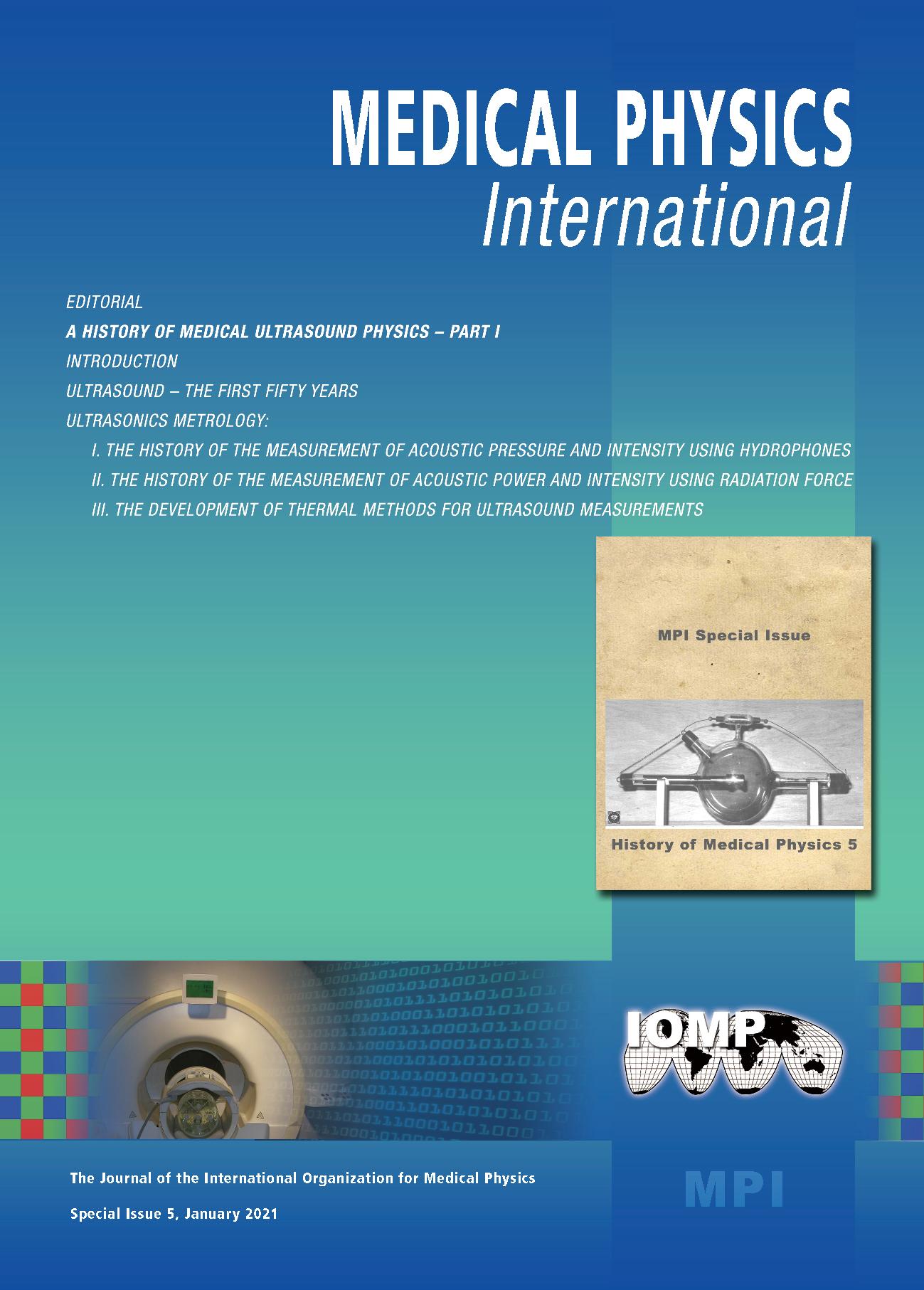The History of Ultrasound
|
The use of ultrasound in medicine began during and shortly after the 2nd World War in various centres around the world. The work of Dr.Karl Theodore Dussik in Austria in 1942 on transmission ultrasound investigation of the brain provides the first published work on medical ultrasonics. “Investigation of Abdominal Masses by Pulsed Ultrasound” Lancet 1:1188–1195 (1958). |
From the mid sixties onwards , the advent of commercially available systems allowed the wider dissemination of the art. Rapid technological advances in electronics and piezoelectric materials provided further improvements from bistable to greyscale images and from still images to real-time moving images. The technical advances at this time led to a rapid growth in the applications to which ultrasound could be put. The development of Doppler ultrasound had been progressing alongside the imaging technology but the fusing of the two technologies in Duplex scanning and the subsequent development of colour Doppler imaging provided even more scope for investigating the circulation and blood supply to organs, tumours etc. The advent of the microchip in the seventies and subsequent exponential increases in processing power have allowed faster and more powerful systems incorporating digital beamforming, more enhancement of the signal and new ways of interpreting and displaying data , such as power Doppler and 3d imaging.
A History of Medical Ultrasound Physics
As part of an initiative to document the history of medical physics, the open access journal, Medical Physics International is publishing two special issues which describe the contributions of physicists and engineers to the application of ultrasound to clinical medicine. The first special issue, published in January 2021, contains four articles by Francis Duck and Kevin Martin which first document the work of pioneering physicists in the first 50 years of development, followed by three articles on the development of ultrasound metrology using thermometry, radiation force and hydrophones.
The first special issue can be found at: http://www.mpijournal.org/MPI-v09SIi05.aspx
 The second special issue, published in May 2021, includes five more articles on the development of ultrasound imaging, Doppler and HIFU technology. Norman McDicken and Carmel Moran give a succinct overview of some early developments. Tony Whittingham gives a detailed historical account of the creation and development of the Diasonograph, a unique ultrasound B-scanner, designed and developed in Scotland. Tom Szabo brings his personal knowledge as a research engineer to the description of the creation of Hewlett Packard’s phased array cardiac scanner. The fourth article, by Peter Hoskins, reviews the history of the development of Doppler techniques in evaluating blood flow. Finally, Gail ter Haar’s article is a reminder that, during the early years that saw advances in ultrasound applications for diagnosis and therapy, challenges were also being met and overcome for exploiting the destructive power of high intensity ultrasound for surgery and ablative therapy. You will find many details of the history of medical ultrasound in these articles that have not been documented elsewhere.
The second special issue, published in May 2021, includes five more articles on the development of ultrasound imaging, Doppler and HIFU technology. Norman McDicken and Carmel Moran give a succinct overview of some early developments. Tony Whittingham gives a detailed historical account of the creation and development of the Diasonograph, a unique ultrasound B-scanner, designed and developed in Scotland. Tom Szabo brings his personal knowledge as a research engineer to the description of the creation of Hewlett Packard’s phased array cardiac scanner. The fourth article, by Peter Hoskins, reviews the history of the development of Doppler techniques in evaluating blood flow. Finally, Gail ter Haar’s article is a reminder that, during the early years that saw advances in ultrasound applications for diagnosis and therapy, challenges were also being met and overcome for exploiting the destructive power of high intensity ultrasound for surgery and ablative therapy. You will find many details of the history of medical ultrasound in these articles that have not been documented elsewhere.
The second special issue can be found at: http://www.mpijournal.org/pdf/2021-SI-06/MPI-2021-SI-06.pdf
For those requiring a more detailed history and references, an excellent article on the history of ultrasound in medicine is published by Dr Joseph Woo.
The BMUS Historical Collection
The BMUS Historical Collection was established in 1984 to collect, document, preserve, exhibit and interpret artefacts and other material relating to diagnostic and therapeutic ultrasound in the UK.
The current collection includes:
- Ultrasound related hardware e.g. small scanners, transducers

- Images, films, video and audio tapes
- Photographs of instruments and people
- Manufacturer's documents
- Personal accounts, letters and interviews
- Originals of papers, Reviews
The collection is kept in Glasgow, with historical documents in the archives of the Mitchell Library in Glasgow and some hardware items on display at the Queen Mother's Hospital. Other hardware items are kept in storage at other sites in Glasgow.
The Collection is available to BMUS members and others for education, research and interest.
Note: some large items have been moved to the Hunterian Museum, University of Glasgow.
Contributions to, and use of, the collection.....
Material of all types, relating to all aspects of medical ultrasound is welcome. Of particular importance and interest are documents and papers not normally kept by libraries.
If you have anything to contribute, or if you wish to view or use the collection for exhibition or research, please contact the Historical Collection Co-ordinator via the BMUS office.






 Although other workers in the USA, Japan and Europe have also been cited as pioneers, the work of Professor Ian Donald and his colleagues in Glasgow, in the mid 1950s, did much to facilitate the development of practical technology and applications.This led to the wider use of ultrasound in medical practice in the subsequent decades.
Although other workers in the USA, Japan and Europe have also been cited as pioneers, the work of Professor Ian Donald and his colleagues in Glasgow, in the mid 1950s, did much to facilitate the development of practical technology and applications.This led to the wider use of ultrasound in medical practice in the subsequent decades.